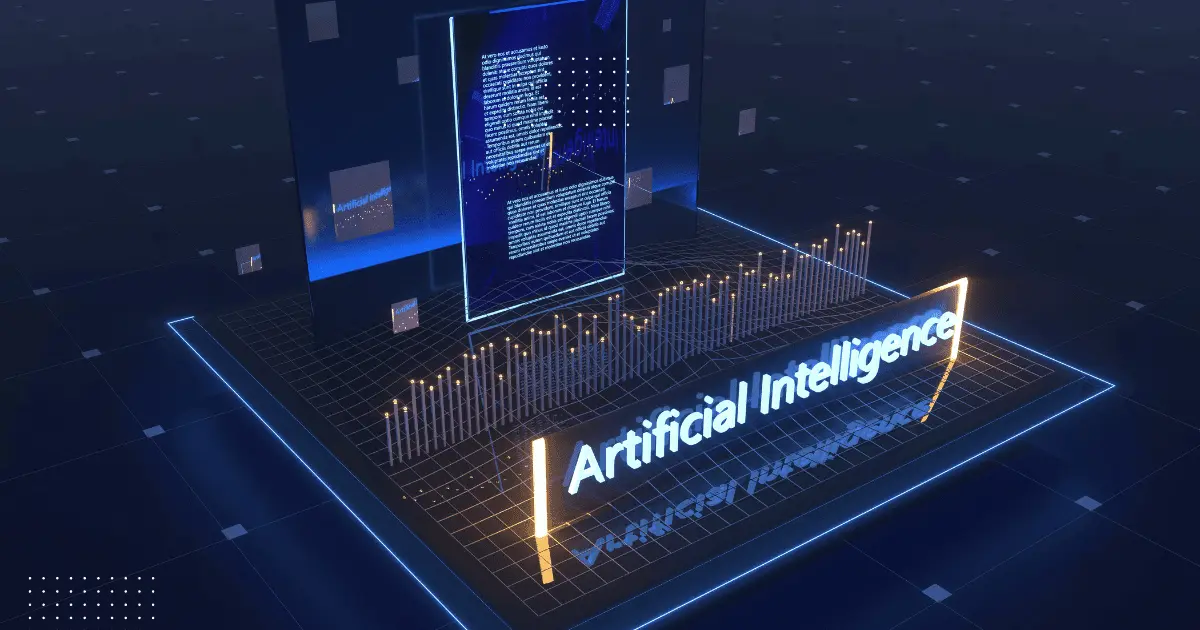History Of Artificial Intelligence (AI) is a revolutionary field of computer science that has transformed the way we live, work, and interact with the world. It encompasses the development of intelligent machines that can perform tasks that typically require human intelligence. These tasks include learning, reasoning, problem-solving, understanding natural language, and visual perception.
AI technology has come a long way since its inception, and it continues to evolve at an unprecedented pace, shaping the future of various industries and society as a whole.
HISTORY OF ARTIFICIAL INTELLIGENCE: FROM MYTHOLOGY TO MODERN MARVELS
Here is a brief history of Artificial Intelligence and its evolution story:
Ancient Roots and Sci-Fi Dreams:
The concept of artificial beings dates back to ancient civilizations like the Romans and Greeks, with mythical creations like Talos. Science fiction literature and movies further popularized the idea of machines with independent thought.
The Birth of Artificial Intelligence:
In 1956, mathematician Alan Turing proposed the idea of machines using information and reason akin to the human brain. The term ‘Artificial Intelligence’ was officially coined at the 1956 Dartmouth Conference by John McCarthy, marking the beginning of formal AI research.
AI Winters:
Periods of inactivity, known as ‘AI winters,’ occurred, but AI development regained momentum after 1993. Milestones included Japan’s WABOT-1, IBM’s Deep Blue defeating a chess grandmaster, and the rise of social humanoid robots like Sophia.
The Ubiquity of Artificial Intelligence:
Today, AI is integral to speech recognition, smart homes, self-driving cars, and numerous other innovations. Constant advancements promise a future where artificial intelligence continues to reshape our world.
TYPES OF ARTIFICIAL INTELLIGENCE
AI can be classified into several categories based on its capabilities and applications:
1. Narrow AI (Weak AI):
Narrow AI refers to AI systems designed to perform specific tasks without possessing general intelligence or consciousness. These systems are trained for a particular purpose and excel in tasks such as speech recognition, language translation, and image recognition. Examples of narrow AI include virtual assistants like Siri and Alexa.
2. General AI (Strong AI):
General AI, also known as strong AI, represents machines with human-like intelligence and cognitive abilities. Unlike narrow AI, general AI can understand, learn, and apply knowledge across various domains. Achieving true general AI remains a goal of AI research, but it poses significant ethical and existential challenges.
3. Machine Learning:
Machine learning is a subset of AI that focuses on algorithms and statistical models that enable computers to improve their performance on a specific task through experience. Supervised learning, unsupervised learning, and reinforcement learning are common types of machine learning techniques used in applications like recommendation systems and autonomous vehicles.
4. Deep Learning:
Deep learning is a subset of machine learning that employs artificial neural networks to model complex patterns and representations in large datasets. Deep learning algorithms, particularly deep neural networks, have demonstrated remarkable success in tasks like image recognition, natural language processing, and game playing.
5. Natural Language Processing (NLP):
NLP involves the interaction between computers and human languages. AI-powered NLP systems enable machines to understand, interpret, and generate human language, facilitating applications such as chatbots, language translation, and sentiment analysis.
6. Computer Vision:
Computer vision enables machines to interpret and understand the visual world. AI systems equipped with computer vision can analyze images and videos, leading to applications like facial recognition, object detection, and autonomous drones.
THE FUTURE OF ARTIFICIAL INTELLIGENCE
The future of artificial intelligence holds immense promise and potential. AI technologies are expected to continue transforming various industries and aspects of our daily lives:
1. Healthcare:
AI-powered tools and algorithms can assist healthcare professionals in diagnosing diseases, predicting outbreaks, and optimizing treatment plans. Machine learning models analyze medical data to identify patterns and trends, aiding in personalized medicine and improving patient outcomes.
2. Autonomous Vehicles:
Self-driving cars and autonomous vehicles rely on AI algorithms, computer vision, and sensor technology to navigate roads safely. As AI systems become more advanced and reliable, they have the potential to revolutionize transportation, reducing accidents and enhancing mobility for people worldwide.
3. Robotics:
AI-driven robots are becoming increasingly sophisticated, and capable of performing complex tasks in diverse environments. From manufacturing and agriculture to healthcare and exploration, robots equipped with AI can handle tasks that are dangerous, repetitive, or require high precision.
4. Climate Change and Sustainability:
AI technologies are being leveraged to address pressing global challenges such as climate change. AI algorithms analyze vast datasets related to climate patterns, energy consumption, and environmental factors to optimize resource management, reduce emissions, and promote sustainable practices.
5. Education:
AI applications in education include personalized learning platforms, intelligent tutoring systems, and automated grading. These technologies cater to individual student needs, offering tailored learning experiences and enabling educators to focus on teaching and mentorship.
6. Ethical and Societal Implications:
As AI continues to advance, ethical considerations surrounding privacy, bias, accountability, and job displacement become crucial. Researchers and policymakers must work collaboratively to establish guidelines and regulations that ensure the responsible development and deployment of AI technologies.
CONCLUSION
In light of the remarkable evolution of Artificial Intelligence, it becomes imperative to stay ahead of the curve. At our training institute, we recognize the significance of embracing cutting-edge technologies. By understanding AI’s history and future potential, we strive to provide quality education that prepares individuals for the challenges and opportunities presented by this transformative field. Join us in shaping the future with knowledge and innovation.





